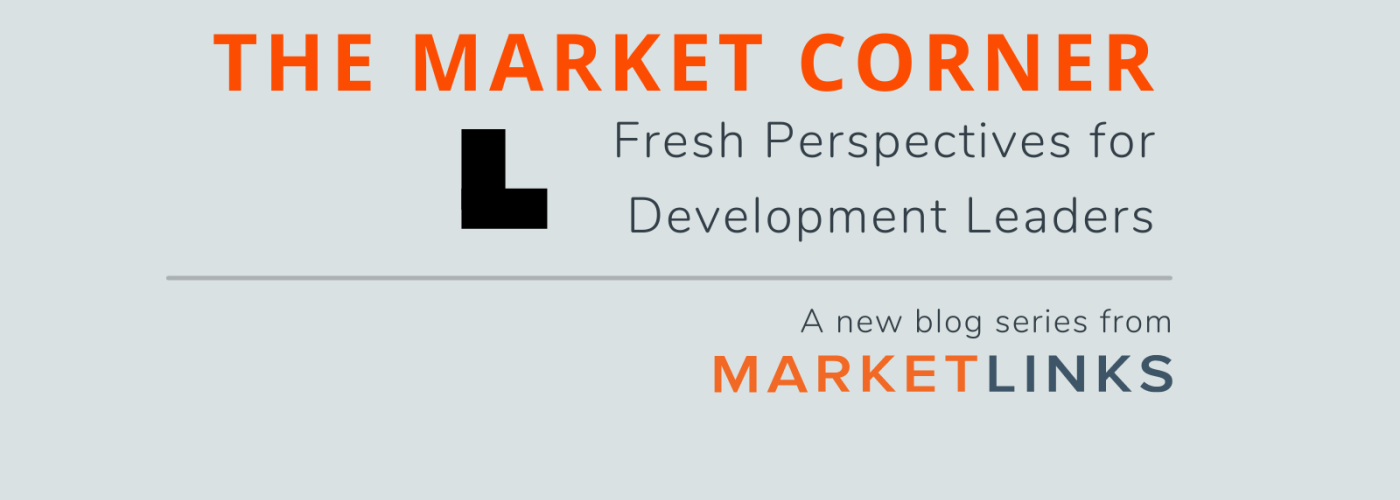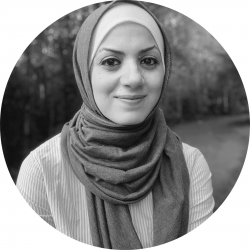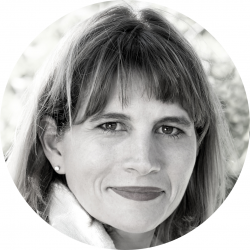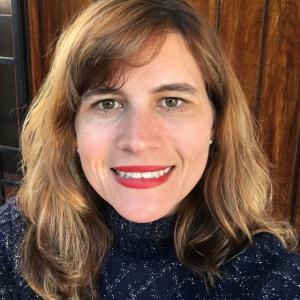The Market Corner: Fresh Perspectives for Development Leaders
Image

This is the first installment of Marketlinks' bi-monthly blog series exploring the application of systems thinking in international development. In this inaugural post, market systems development (MSD) experts Holly Lard Krueger and Maha Hayek discuss MSD implementation in fragile and conflict-affected situations. Read part two of the discussion here.
Systems thinking forces us to make sense of messy, complex problems by delving into the hows and whys behind human behavior and market outcomes. It requires us to think deeply about complex challenges. It is also a humbling practice, especially in the field of development, where assumptions are nearly always wrong and where we try, fail, adapt, fail some more, and then try again.
In a new bi-monthly blog series, Marketlinks will showcase the wide-ranging application of systems thinking in international development to equip you, the reader, with practical tools and insights into how we can accelerate the pace of productive, inclusive, and sustainable growth.
To begin the series, market systems development expert Holly Lard Krueger asks emerging leaders across development fields and thematic areas how they approach and apply systems thinking in their work; to describe what’s working and, more importantly, what’s not and why; and to reveal their most cherished technical tools, frameworks, and guidance documents.
And now, let’s hear from Holly.
Pursuit of the practical and pragmatic
Because systems thinking can be intimidating, I have always been in the pursuit of the practical and pragmatic, and I like to draw attention to and learn from what’s working and what’s not on the ground. I think about how to encourage teams and individuals to accept and own the fact that we do not have the solutions to broad-based, inclusive, and sustainable growth but rather have informed hypotheses that need to be tested and refined over time and with data. I also consider the influence of leadership on how staff approach and test solutions to complex development problems.
For this inaugural post, I spoke with Maha Hayek, the Resilient Markets Adviser for the SEEP Network and the facilitator of its Markets in Crisis (MiC) Community of Practice. She is also an MSD practitioner with experience designing and implementing economic and agricultural development programs in Palestine, a Fragile and Conflict-Affected Situation (FCAS).
In this first part of our two-part interview, I ask Maha about the opportunities and challenges MSD practitioners face working side-by-side with humanitarian actors in FCAS, how she adapts MSD approaches to engage with the private sector in extraordinarily challenging contexts like the Gaza strip, and what tips she has for managing the unpredictability inherent in fragile and conflict-affected situations.
Q: Do humanitarians and MSD practitioners see the same challenges through different lenses?
In FCAS, you can’t work purely in humanitarian aid or in development.
It is not easy to work in both (crisis and development) together. They are not mutually exclusive, but integrating them depends on the situation and the time of intervention. I was in Gaza during the 2014 war. At that time, when you are enduring the war, the priority is to help displaced and affected people survive by direct subsidies. I am not saying that systems and private sector engagement (PSE) are not crucial at this stage, because they are facilitating the delivery of any aid. But I mean the focus is on using the market systems and not developing them. When the situation starts to settle down, you start to add recovery and development lenses to your interventions. This is why we talk about the nexus. We are trying to bridge the gap between the two. You can’t work purely in humanitarian or purely in development.
Yes, that resonates with the framing used by a recent policy brief on MSD in FCAS, that humanitarian aid actors focus on addressing essential needs, while MSD practitioners look at why essential and livelihood needs are not being met and seek to address the root causes. Both are needed, but our different framing of the challenge can lead to conflicts in our approaches. I think these concepts around approaches and timing are well captured here.
Q: What approaches have you found to be effective in spanning this chasm between humanitarian response and development?
You collaborate with other actors and use a push-pull approach.
Sometimes when you're working with donors who really just care about development and applying MSD in protracted humanitarian crises or FCAS, all you can do is work using a facilitation approach. So you work with the private sector to make a change in the system. But you also have to collaborate or coordinate with other actors, including NGOs and donors, who are also working in similar areas, though they may use more direct delivery approaches. For example, when I was working on an agriculture development program in the Gaza strip, we realized that the fruit and vegetable seedlings that were circulating were ill-suited to the soil and climate (because they were imported), and this was a major constraint affecting the productivity of small-scale producers. We started to find and support partnerships with nurseries to introduce a new type of seedling more adapted to the soil and climate of the Gaza strip using a new technique, grafting. We provided matching grants to the nurseries, so they could acquire equipment and participate in training.
We didn't know, however, if the farmers, due to the deteriorated economic conditions, could pay for the seedlings. So what we did was coordinate with other organizations who were providing direct support to small-scale farmers in the form of a subsidy. This collaborative approach enabled the nurseries to test demand for the seedlings and helped the small-scale farmers access improved planting material to test it and see if it was worth the future investment.
We started by testing a hypothesis.
When we started, we were trying to test a hypothesis. We wanted to test whether a new grafting technique would succeed in producing suitable seedlings for the Gaza Strip conditions and result in increased productivity of the small-scale producers. We also drafted a set of assumptions. For example, we assumed that the raw inputs would be accessible, that the knowledge would be accessible and easily picked up by local nurseries, that the local practitioner would accept the new technique, and that farmers would accept the new seedlings.
In the first season, we started with a pilot phase, with one nursery, one crop, and a limited number of seedlings. We monitored the production at that season, and we were surprised by the success of the seedlings, as they succeeded in increasing the productivity and profitability of both farmers and nurseries. In the second season, we partnered with two other nurseries and we expanded the production of the seedlings from the first crop and replicated this intervention to two other crops. However, the acceptance of the farmers to the two new crops was not at the same level as the first one. So the scale-up phase focused on the first crop (see more about the project).
In FCAS, you need to add a contingency plan to your hypotheses and actively practice adaptive management.
I was working on one consultancy in Gaza last May. Based on a number of parameters, such as growth potential and the youth focus of the project, we selected the value chains with the most economic and youth employment potential. But with the outbreak of the war, there were radical changes in the business environment. Many of the workshops and factories were destroyed, affecting many potential targeted partners. So we are in the process of adapting our hypothesis and exploring if the focus of the interventions should be expanded from linking the youth with workshops and factories to supporting these establishments to restore their production activities. Or perhaps with the new changes, other value chains may have more potential to support the project scope of work.
You have to always think about other scenarios and manage adaptively. And you have to do continuous monitoring of what is happening. You are building something, but you have to monitor all the time what is happening in the market, because the changes could happen in a minute.
More insights and practical resources on MSD in FCAS coming soon!
In the next installment of the Market Corner, we’ll hear more from Maha Hayek about the characteristics of effective MSD leaders in FCAS and the ongoing challenges she and others face in meaningfully including excluded groups in MSD.
In the meantime, help us put more tools and guidance documents in the hands of MSD practitioners working in FCAS. Post a resource via your Marketlinks account, or send them to us at info@marketlinks.org.
We will include a selection of these resources in the next installment on MSD in FCAS.
About
Image

Maha Hayek
Maha Hayek is a market systems development specialist with six years of experience in designing and executing development and humanitarian projects in conflict contexts. Maha has contributed to the implementation of leading international development programs in Palestine, funded by DFID, SIDA, and DFAT. She worked as a market systems development adviser with DAI in the Gaza Strip. Maha has worked on applying market systems development approaches to different economic sectors including agriculture, textile, and IT. Maha is now working as an individual consultant helping develop intervention strategies that contribute to pro-poor economic development and promote youth employment and gender inclusion. Maha is also leading the resilient markets thematic area at the SEEP Network and is facilitating its Markets in Crisis (MiC) community of practice.
Image

Holly Lard Krueger
Holly Lard Krueger is a managing partner at the Canopy Lab and a market systems development expert with over 15 years of experience providing technical advice in the field of private sector development/engagement with a specific focus on applying digital technology, gender equality and social inclusion (GESI), market systems, and Value for Money (VfM) principles to project and strategy design for agriculture, humanitarian aid, business enabling environment reform, trade, urban development, and women’s economic empowerment programs.
Holly is a proven strategic leader, having managed large market systems projects with diverse teams. She is also skilled as a strategic advisor, coach, and trainer in the practical application of systems approaches to market development, and she is currently an advisor to USAID’s Bureau for Humanitarian Assistance, a World Bank-funded program in West Africa (TFWA), a DFAT-funded program in Indonesia (PRISMA), and a FCDO-funded program in the Democratic Republic of the Congo (Essor). Holly is based in Morocco and has worked in over 15 countries in Africa, Asia, and the Middle East and has implemented projects and conducted evaluations for leading donors, including the Bill & Melinda Gates Foundation, DFAT, IFC, FCDO, USAID, and the World Bank. She has an M.A. from Johns Hopkins School of Advanced International Studies and a B.A. from Vanderbilt University.



